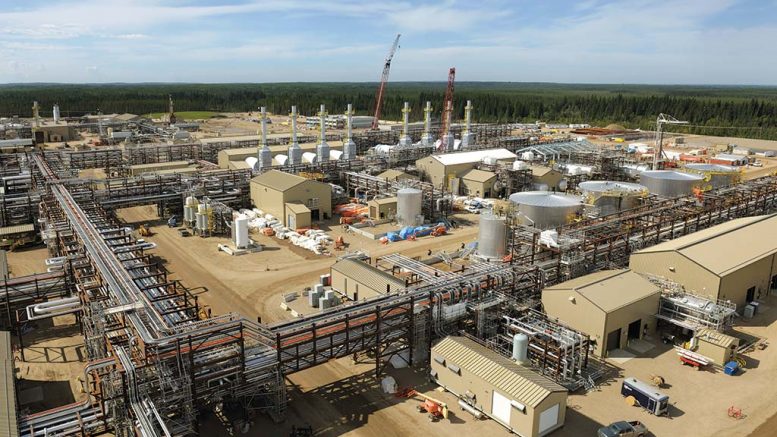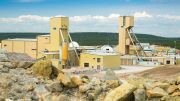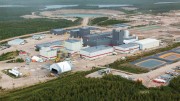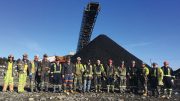VANCOUVER — It’s been a volatile few years for Canadian energy producers in Alberta’s oilsands. Last year provincial voters elected the New Democratic Party, which is rarely a ready friend to the fossil fuel industry. Meanwhile, oil markets have been mired in a three-year slump underpinned by global oversupply issues, and pipeline approvals, in any cardinal direction, are hard to acquire in the face of stern opposition from many environmental groups.
All these sociopolitical and economic uncertainties have driven consolidation and other transactions, with numerous foreign multinationals opting to divest oilsand assets, while some of Canada’s largest players have moved to expand footholds in the region.
In late May, Royal Dutch Shell (NYSE: RDS.B) completed the sale of its major oilsands holdings in Alberta to Canadian Natural Resources (TSX: CNQ; NYSE: CNQ), one of Canada’s largest energy firms.
Shell divested its Carmon Creek project and assets near Peace River in northwestern Alberta, plus other undeveloped oilsands leases, as it slashed its stake in the Athabasca Oil Sands project (AOSP).
The AOSP portfolio also includes the Jackpine and Muskeg River mines, as well as nearby mineable leases, which use truck and shovel bitumen mining with a paraffinic bitumen extraction process.

The AOSP’s two open pit mines are Muskeg River and Jackpine. Here, large shovels and trucks are used to excavate the ore containing bitumen. Credit: Shell Canada.
The Netherlands-based multinational received US$5.4 billion in cash and nearly 98 million Canadian Natural shares, which are valued at $3.1 billion. Shell had shelved Carmon Creek in late 2015 due, at least in part, to problems in developing pipelines to access coastal ports.
In another agreement, Shell and Canadian Natural are jointly acquiring Marathon Oil’s (NYSE: MRO) Canadian subsidiary for US$2.5-billion in cash. Marathon owns another 20% interest in the AOSP.
Based on the previously approved budget, June mine production from Canadian Natural’s working interest in the AOSP assets is targeted to range from 173,000 to 191,000 barrels per day.

A large conveyor transports bitumen at the Muskeg River mine. Credit: Shell Canada.
“We look at all the assets that go through our core areas, and we evaluate them. We bid on a few, and we get even less,” Canadian Natural Resources president Steve Laut said during a second-quarter conference call. “It’s very much a high-grade process. Clearly, we have [some deals] in front of us, and that’s what we’re focused on, and so we’ve got lots on our plate. But that won’t stop us from evaluating everything that goes through our core area.”
Meanwhile, ConocoPhillips (NYSE: COP) made a US$13.3-billion deal with Canada’s Cenovus Energy (TSX: CVE; NYSE: CVE) in May to divest its 50% interest in the Foster Creek Christina Lake oilsands partnership, as well as most of its western Deep Basin gas assets.
The Texas-based company will, however, keep its 50% stake in the Surmont oilsands joint venture and its wholly owned Blueberry-imperial oil Montney unconventional acreage position. ConocoPhillips now owns 16.9% of Cenovus.
“This acquisition gives us full exposure to our oilsands growth opportunities and upside potential from emerging technologies that are already underway,” Cenovus president and CEO Brian Ferguson said in April.
“We will nearly double our existing production capacity with a clear line of sight to meaningful growth, resulting from our large inventory or regulatory approved oilsands projects, and a decade of identified drilling opportunities in the Deep basin,” he added.

An aerial view of Cenovus Energy’s Christina Lake oilsands project, 150 km southeast of Fort McMurray. Credit: Cenovus Energy.
U.K.-based research firm Wood Mackenzie noted in a May report that the “blockbuster” US$23 billion in merger and acquisition activities in Alberta follow “a wave of consolidation,” with over 70% of oilsands production concentrated in the hands of Canada’s four largest producers: Suncor (TSX: SU; NYSE: SU), Canadian National, Imperial Oil (TSX: IMO; NYSE-MKT: IMO) and Cenovus.
Wood Mackenzie adds that “other rumoured oilsand sellers” include BP (NYSE: BP; LON: BP), Chevron (NYSE: CVX) and France’s Total (NYSE: TOT).
Canadian oilsands production reportedly “continues to increase,” and hit a new high of nearly 2.5 million barrels per day during the first quarter.

A haul truck receives a load at Canadian Natural Resources’ majority-owned Athabasca Oil Sands project in Alberta. Credit: Shell.
Production gains are underpinned by the “ramp-up of new phases,” such as: Horizon Phase 2B, Surmont Phase 2, Christina Lake Phase F, Foster Creek Phase G and Sunrise Phase 1.
“The core of our business is the oilsands,” Suncor president and CEO Steve Williams stressed in an April conference call. “There are obviously known sellers out there, and I don’t think this exodus by a lot of the big international companies is quite finished yet. There could be incredible opportunities out there.”






Be the first to comment on "Wave of consolidation hits Canada’s oilsands"